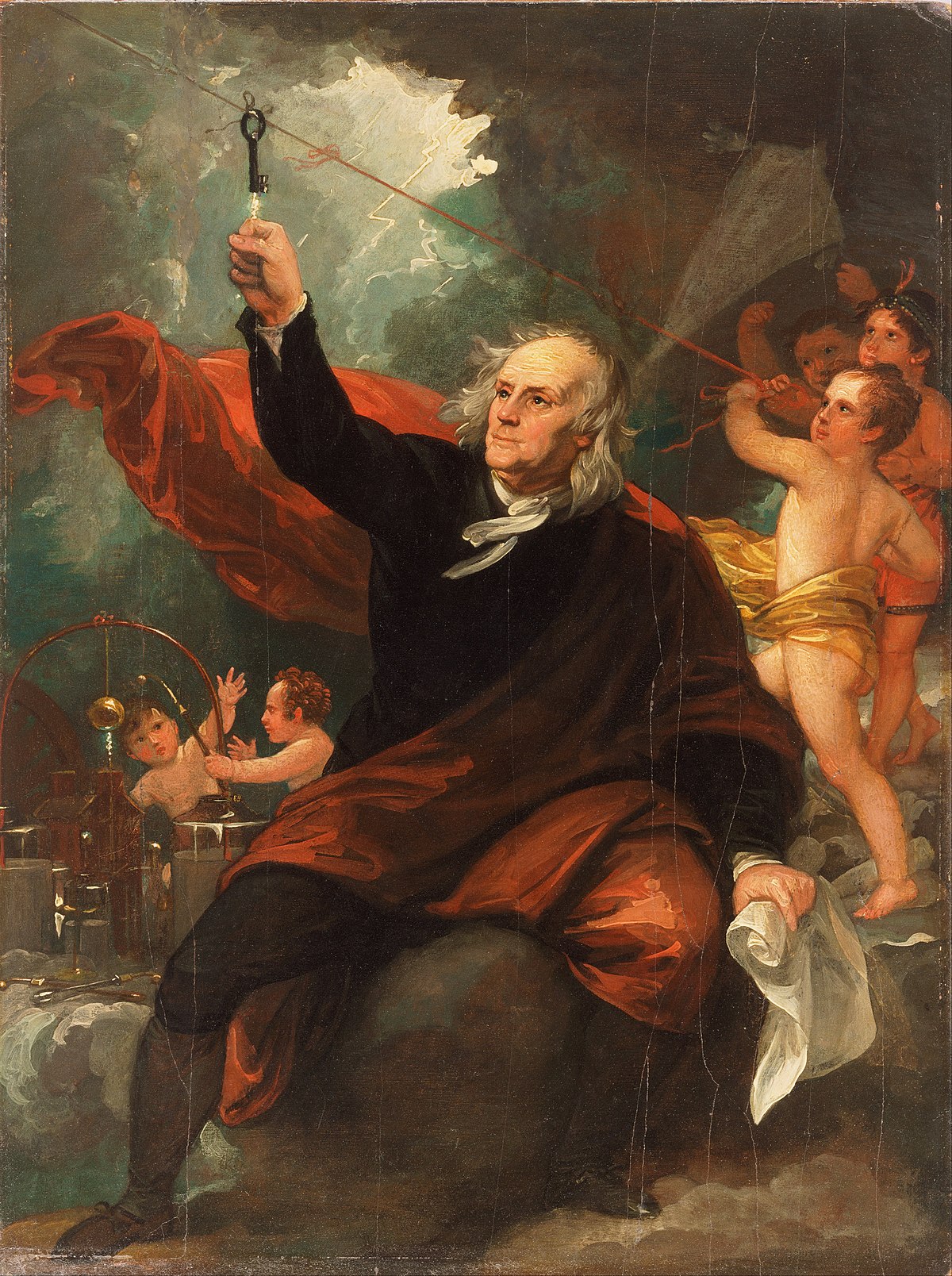
Kite Experiment
Philadelphia, PA, USAFranklin published a proposal for an experiment to prove that lightning is electricity by flying a kite in a storm. On May 10, 1752, Thomas-François Dalibard of France conducted Franklin's experiment using a 40-foot-tall (12 m) iron rod instead of a kite, and he extracted electrical sparks from a cloud. On June 15, 1752, Franklin may possibly have conducted his well-known kite experiment in Philadelphia, successfully extracting sparks from a cloud. He described the experiment in his newspaper, The Pennsylvania Gazette, on October 19, 1752, without mentioning that he himself had performed it. This account was read to the Royal Society on December 21 and printed as such in the Philosophical Transactions. Joseph Priestley published an account with additional details in his 1767 History and Present Status of Electricity. Franklin was careful to stand on an insulator, keeping dry under a roof to avoid the danger of electric shock. Others, such as Georg Wilhelm Richmann in Russia, were indeed electrocuted in performing lightning experiments during the months immediately following his experiment.
Franklin's electrical experiments led to his invention of the lightning rod. He said that conductors with a sharp rather than a smooth point could discharge silently and at a far greater distance. He surmised that this could help protect buildings from lightning by attaching "upright Rods of Iron, made sharp as a Needle and gilt to prevent Rusting, and from the Foot of those Rods a Wire down the outside of the Building into the Ground; ... Would not these pointed Rods probably draw the Electrical Fire silently out of a Cloud before it came nigh enough to strike, and thereby secure us from that most sudden and terrible Mischief!" Following a series of experiments on Franklin's own house, lightning rods were installed on the Academy of Philadelphia (later the University of Pennsylvania) and the Pennsylvania State House (later Independence Hall) in 1752.
